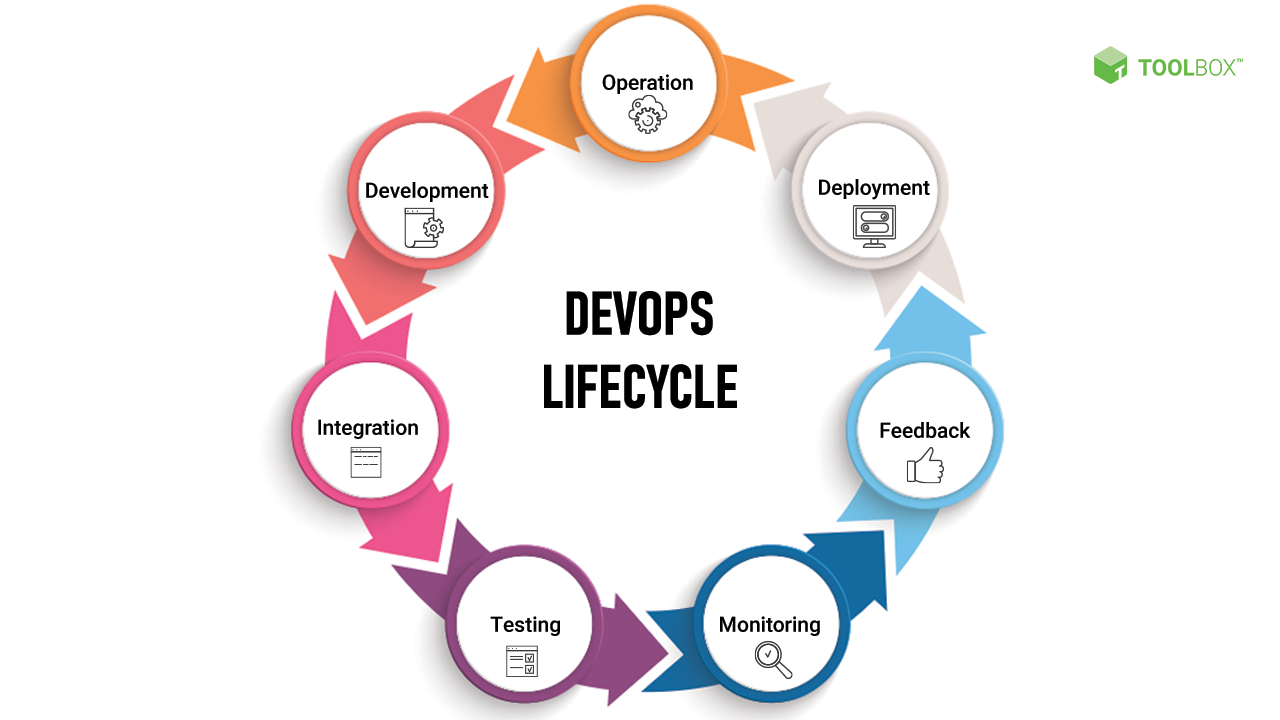Industry News
How to avoid network and server infrastructure issues during the development cycle

Mathieu Duperré, CEO, Edgegap
Regardless of whether you’re an indie developer or a AAA publisher, making games is never simple. Taking a game project from the initial concept to launch is a huge undertaking, especially when you begin incorporating multiplayer and social elements. Despite eye-watering budgets and huge teams of developers, countless games fall flat on release.
Thankfully, many of the common obstacles can be easily avoided and disruption to your release timeline kept to a minimum if you’re aware of the potential network and server infrastructure issues at key stages of development: the main development cycle, pre-launch, the launch period itself and once the game has launched.
Problems during the main development cycle
Some of the most common problems you’ll encounter on the tech side of the main development cycle can be the result of:
- Imperfect or hurried CI/CD pipelines. It can take days to push a new release for testing when you should be able to launch a few releases every day.
- Dev teams taking on too much in-house rather than seeking outside assistance (netcode, game engine, backend services).
- Trying to save funds through open-source projects that eventually become outdated, unsupported during your dev cycle or ends up in engineering money pits.
- Developers waiting until post-launch to focus on important elements such as crossplay.
- QA teams lacking constant access to the game build.
Any of these sound familiar? If so, it might be time to rethink your core strategy and whether you’re adhering to the DevOps methodology. Do you have a structured approach or are you lurching leftfield and drifting off course?
While developing your own netcode and game engine in-house can seem appealing, it’s important to consider the potential risks that might emerge further down the road. If problems with your netcode or a proprietary game engine present themselves at a particularly busy stage of development, you’ll wish you’d have outsourced them.
Considering where you can offload certain aspects of development to external partners can help reduce your team’s workload and improve their efficiency so they can focus on more pressing matters.
Mistakes to avoid just before the launch
One of the biggest mistakes you can make just before launch? Underestimating your CCU (concurrent users worldwide) and employing a low percentage buffer of around 10%. Misjudging your CCU is going to put too much strain on your servers and overall backend services and is one of the most common reasons players experience crashes around the launch. Similarly, don’t underestimate the number of regions you’ll need servers in too. A global game launch requires an equal distribution of worldwide servers to avoid latency issues.
When it comes to servers, it’s always best to plan ahead and scale back, rather than the other way around. Prioritise network partners who offer pay-as-you-go options for server access, so if you do need to scale back (or up) you can do so easily. This should always be the preferred option and will prevent you from being charged for servers you’re not using. It’s important to be aware of the risks associated with overestimating, as this can lead to studios signing long-term contracts and ultimately being overresourced.
Finally, one issue that can cause developers and studios a lot of trouble is data protection regulation laws. I’ve heard plenty of horror stories about studios turning a blind eye to privacy laws such as the General Data Protection Regulation (GDPR) and the California Consumer Privacy Act (CCPA). Make sure you’ve checked the specific rules regarding data collection in your region as early as possible to avoid a frantic rush of paperwork towards the end of development or, worse, incurring costly fines.
Obstacles on launch day
It can be easy to think that you’ve made it through the worst once you reach launch day, but this is usually the stage where major issues can suddenly appear. You may notice a bombardment of negative responses from Twitter, Steam and other platforms addressing critical issues with the game – make sure you address these rather than ignoring them. These responses can be important indicators of how the players are responding to your game and if you’ve factored their feedback in the development phase.
Once the game has launched, you will have the clearest indicator of how many servers you’ll need to support the players. This is where your planning will prove to be correct or wide of the mark if you’d reserved say 1000, but you only need 200.
A 24/7 support plan is an important consideration when the game is live, this will enable rapid fixes to negate as many disruptions as possible. A low-cost DDoS solution is also a crucial facet to bear in mind. A server orchestrator will help developers manage influx of traffic along with capturing crucial data that can be incorporated into the game as part of the observability phase.
Post-launch issues
Now that your game is in the world, there can be a strong temptation to introduce a plethora of new elements to the game to enhance the player experience. While on the face of it these are good ideas, new mods or minor updates can prove problematic and contain major bugs. Responding to these new issues can be distracting and take weeks or even months to solve.
On top of this, if you haven’t properly planned earlier in the process, major updates to your game servers could potentially lead to maintenance issues and significant downtime for your player base. If players have a bad experience on launch, they’ll likely just move on to the next best thing. When EA launched Battlefield 2042, server issues, loading times and game-breaking bugs plagued the game. Within months, player numbers dropped to fewer than 1,000 concurrent players on Steam.
Of course, there are a number of ways to circumvent these issues. It is crucial to choose a backend that can support multi-versioning A/B testing and facilitate rolling updates without outages. You’d be hard-pressed to find a gamer who enjoys an unplayable game. Automation can also help in the production pipeline, this includes deploying quick fix updates and upgrades which will reduce the human error factor.
Another consideration that is often overlooked is outsourcing for network and platform providers to remove a large in-house team dedicated to DevOps or Engineering. This is intensive work that will take up the time of staff, and outsourcing is a viable option and it makes perfect sense for smaller studios, especially to pursue this option purely from a cost-saving perspective.
Making edge count
Edge computing is often overlooked by game developers, but it can alleviate many of the issues described here, particularly around server provisioning and latency issues. Edge technology brings computation and data storage closer to the source of the data, placing it at the edge of the network where performance gain is most optimal. This reduces unnecessary travel and drastically speeds up the process resulting in close to a lag-free experience.
If you’re looking at cross-play for your game, infrastructure requirements become more complex. Edge computing helps to negate some of the most nagging delay issues that come with playing across different platforms. As cross-play becomes more of a consideration for developers, edge computing along with automation can come to be one of the solutions to some of the associated problems. Developers should consider the automation part of the equation when planning their game project. It becomes even more vital when you add more latency-reliant elements to a game.
Fail to plan, plan to fail
There is no one size fits all approach to game development or the challenges associated with it. But taking some of the steps outlined above can help negate potential issues and lessen their impact, preventing total derailment of a game before it even launches.
Small steps like putting your trust in external partners or looking at technologies like Edge computing to squeeze as much performance out of your game as possible might seem small, but their impact on development can’t be underestimated.
Planning for different eventualities at key stages of development will go a long way in ensuring your game is the best it can possibly be at launch. This will give your game the best chance at becoming a lasting hit, not a flash in the pan that’s marred by server issues or bugs.
The logistical side of creating a game might not always be glamorous or exciting, but it’s unavoidable. If your development pipeline is hit by server issues, you’ll be glad you planned ahead.
Powered by WPeMatico
Debra Martin Chase
Gaming and Leisure Properties Appoints Debra Martin Chase to Board of Directors

Gaming and Leisure Properties Inc. announced that Debra Martin Chase has been appointed to the Board of Directors as a new independent director, effective immediately, to fill the vacancy created by the previously disclosed passing of JoAnne A. Epps.
The appointment of Ms. Chase to the Board of Directors brings the total number of directors to eight, seven of whom are considered independent according to the listing standards of the Nasdaq Stock Exchange. Ms. Chase has also been appointed as a member of the Nominating and Corporate Governance Committee of the Board of Directors, effective immediately. Ms. Chase will hold her directorship until the Company’s next annual meeting of shareholders or until her successor is duly elected and qualified or until her earlier death, disqualification, resignation, or removal.
Ms. Chase is the founder and Chief Executive Officer of an entertainment production company doing business as Martin Chase Productions. She is a two-time Tony Award winning, a Peabody Award winning, and three-time Emmy nominated television, motion picture, and Broadway producer. Ms. Chase is an entertainment industry trailblazer, being the first female African American producer to have a deal with a major motion picture studio. Her films have grossed over $500 million at the box office. She brings to the Company over 30 years of experience in motion picture and television production as well as a corporate legal background.
Peter Carlino, Chairman and Chief Executive Officer of GLPI, said: “I am delighted to welcome Debra to our Board as we believe her extensive entertainment industry experience, impressive legal background and broad board experience across public companies and the arts will serve GLPI well as we continue to drive growth in shareholder value. She brings a wealth of knowledge to GLPI, which we believe is a perfect complement to the existing strengths of the Board. I am confident that she will help expand the diverse set of viewpoints that ultimately shape our mission.”
Industry News
Kindred’s Share of Revenue from High-risk Players Shows Slight Increase

Kindred Group plc’s (Kindred) share of revenue from high-risk players showed a slight increase to 3.2% (Q4 2023 3.1%) in the first quarter of 2024. Compared to the first quarter of 2023, the high-risk revenue share decreased marginally. The percentage of detected customers who exhibited improved behaviour after interventions came in at 87.1% (compared to 87.4% in Q4 2023 and 83.0% in Q1 2023). This sustained trajectory in the improvement effect after interventions, observed over an extended period, serves as a testament to the strong dedication and collective efforts throughout the company. It reflects Kindred’s ongoing commitment to fostering positive change within the industry.
“We continue to see our share of revenue from high-risk players fluctuate quarter to quarter, and we are working closely with all teams across the company to support customers towards a more sustainable gambling experience. However, it is encouraging to see that our Journey towards Zero data has steadily decreased since 2020. A similar trend can be seen across the healthier gambling behaviour effect after interventions. This tells us two things: our work is paying off, but we need to continue to push ourselves to propel a sustainable progression,” Alexander Westrell, Director of Communications at Kindred Group, said.
“It was very encouraging to witness the open and transparent discussions at the Sustainable Gambling Conference in London on 20 March, where those with lived experience shared their important stories. Also, it is evident that technology is moving forward, and will provide greater opportunities to detect and intervene in the future. We hope to see more regulators engage with the industry and with experts to secure a more sustainable industry for everyone,” Alexander Westrell added.
The post Kindred’s Share of Revenue from High-risk Players Shows Slight Increase appeared first on European Gaming Industry News.
Industry News
PENN Entertainment Names Aaron LaBerge as Chief Technology Officer

PENN Entertainment announced that Aaron LaBerge has been named Chief Technology Officer (CTO) effective July 1, 2024, subject to customary regulatory approvals. Mr. LaBerge will report directly to PENN CEO & President Jay Snowden.
In his new role, Mr. LaBerge will be responsible for driving the technology strategy and execution for PENN, while leading the multinational team of technologists and serving as the key business leader for the company’s Interactive division.
Mr. LaBerge spent more than 20 years at The Walt Disney Company, in two stints separated by five and a half years as a technology entrepreneur. He was most recently President & Chief Technology Officer for Disney Entertainment and ESPN where he was responsible for driving all technology and product development in support of The Walt Disney Company’s two media divisions. In that role, he helped set the vision and strategic leadership for how Disney uses technology to enable storytelling and innovation, drive its business, and create unparalleled consumer experiences with entertainment and sports content.
“We are thrilled to have someone of Aaron’s caliber join our PENN executive team. Having overseen a global organization of thousands of engineers, product developers, designers, technologists, and data scientists that created some of the largest scale and most successful media properties in the world, there is no better candidate to lead our Technology and Interactive division into its future. I know Aaron is looking forward to working with Todd George, our head of operations, and our entire Executive Team to continue growing our position as a leader in online gaming, sports betting, and digital sports media,” Mr. Snowden said.
“I’m excited to join another talented team at PENN Interactive and lead our technology strategy. PENN Entertainment is at the forefront of the fast-changing gaming and sports media industry. I plan to use my experience from Disney and ESPN to help make ESPN BET an essential piece of the sports fan experience. Together, we’ll push the limits and redefine how fans interact with sports and gaming,” Mr. LaBerge said.
Prior to his most recent role at the Walt Disney Company, Mr. LaBerge was Executive Vice President and Chief Technology Officer at ESPN from 2015 to 2018. At ESPN he played an instrumental role in the growth of ESPN’s consumer-facing digital media products and services – leading many of ESPN’s most ambitious and challenging projects and helping establish ESPN’s position as the leader in digital sports and innovative sports technology development. He was a key architect in the design, development, and engineering of ESPN’s state-of-the-art facilities in Bristol, CT; Los Angeles, CA; Charlotte, NC; and Austin, TX, as well as data centers and infrastructure that connect those facilities around the world, as well as the technology design and development to support the launch of the multi-platform SEC Network.
Between 2007 and 2012, LaBerge was co-founder and CEO of Fanzter, Inc. – a venture-funded consumer software and digital product development company. At Fanzter, he directed all day-to-day operations and led the development and launch of a variety of consumer-focused internet and mobile products, ground-breaking social and commerce technologies and more.
The post PENN Entertainment Names Aaron LaBerge as Chief Technology Officer appeared first on European Gaming Industry News.
-

 Central Europe7 days ago
Central Europe7 days agoAleatrust Signs Up as Supporting Member of the Austrian Sports Betting Association
-

 Latest News6 days ago
Latest News6 days agoWeek 16/2024 slot games releases
-

 Central Europe7 days ago
Central Europe7 days agoWazdan amplifies Swiss presence with Swiss4Win launch
-

 Compliance Updates7 days ago
Compliance Updates7 days agoElys BMG Group Announces Approval for The Ugly Mug Sportsbook in Washington, DC.
-

 Brazil6 days ago
Brazil6 days agoPG Soft Set to Sponsor Key SiGMA Americas Event
-

 Amusnet7 days ago
Amusnet7 days agoAmusnet Brings Up its Excellence at SiGMA Americas
-

 Baltics4 days ago
Baltics4 days agoMARE BALTICUM Gaming & TECH Summit Announces Final Agenda for 2024 Event
-

 Latest News7 days ago
Latest News7 days agoBet365 Debuts its Bespoke Live Game Show Super Mega Ultra in Collaboration with Playtech




















